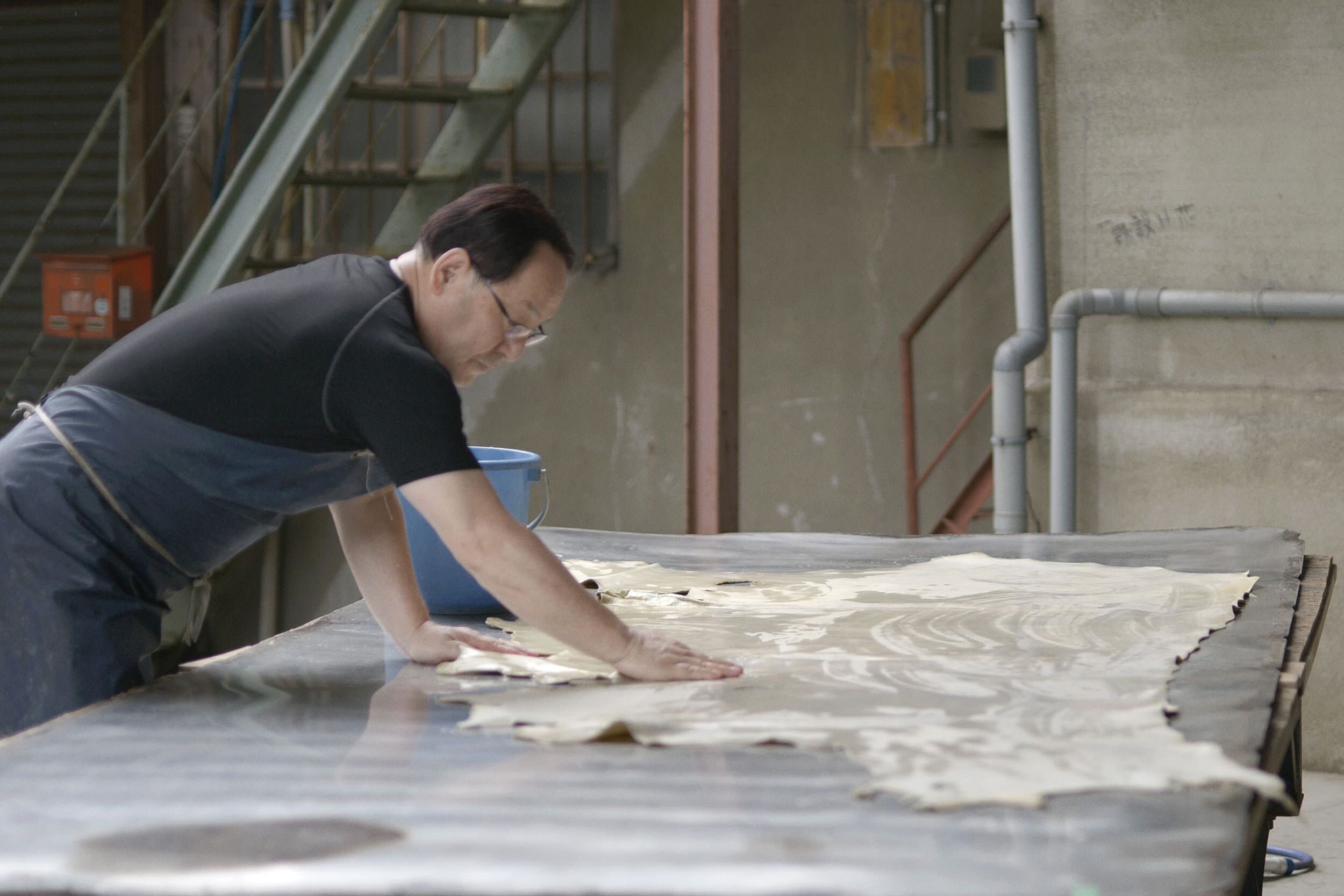
“SHIRONAMESHI” is a tanned leather of Himeji in Japan with a history of over 1000 years.
HISTORY
Himeji, the mecca of the leather industry
Himeji, located in the western part of Hyogo prefecture, was traditionally called Harima. Records from the Heian period (794 to 1185) show that Harima was an area known for leather production. In this period over a thousand years ago, the SHIRONAMESHI method was practiced mainly in the Takagi area of Himeji. The waters of the Ichikawa, the river that ran through the area, were perfect for this method. It is said that SHIRONAMESHI could not have developed in other areas because of differences in water quality. Besides the water quality, the climate and environment of Harima contributed to the success of this method.
Handing down the techniques and declining of the industry
Tanning was originally brought over to Japan from China in ancient times. With the waters of the Ichikawa and weather conditions at Himeji, the SHIRONAMESHI method, which only uses salt and oil, was gradually evolved. During the Edo period, SHIRONAMESHI leather, famed for its beautiful cream color and strength and suppleness, was a specialty of the Himeji clan. Leatherwork using SHIRONAMESHI leather was sought after both at home and abroad. However, as western tanning methods gained popularity after the Meiji period, demand for SHIRONAMESHI leather decreased.
Acknowledgment of the “SHIRONAMESHI”
SHIRONAMESHI initially lost favor when chromium tanning methods, which were much cheaper and more suitable for mass production, became more widespread. Around 2000, long after the practice of SHIRONAMESHI had ceased, Dr. G. Moog, the dean of the Leather Institute German Tanners’ School Reutlingen, urged local Himeji government officials to revive this traditional technique. In a letter, he hailed the uniqueness of the SHIRONAMESHI method and insisted that the technique be brought back and preserved.
CRAFTSMANSHIP
The traditional craftsmanship was revived by betting craftsman’s life
















After the flesh is removed from the skin, the hide is soaked in the river. Bacteria in the waters of the Ichikawa accelerate hair removal. The hide remains in the water for a week in summer and two weeks in winter. It is then taken out of the water and the remaining hair is removed with a knife.